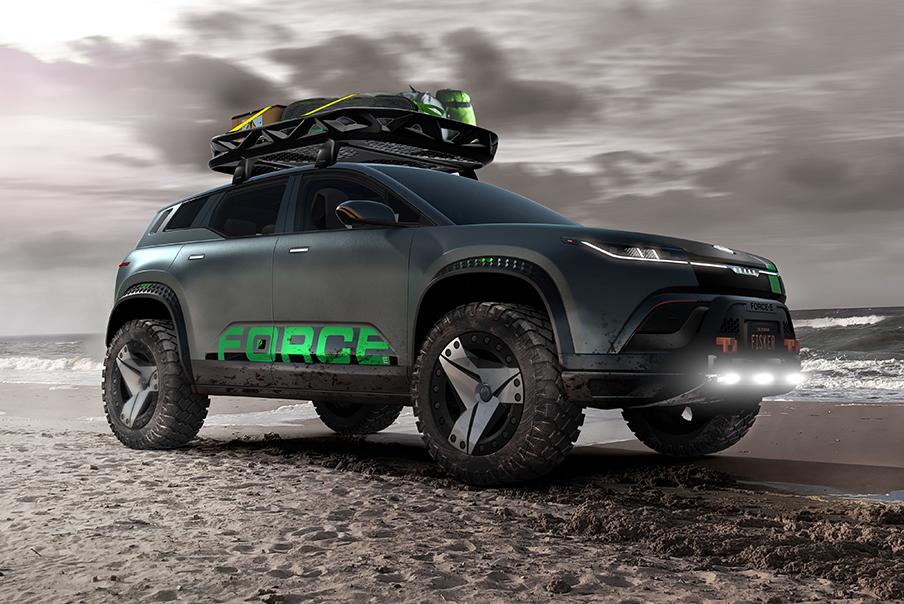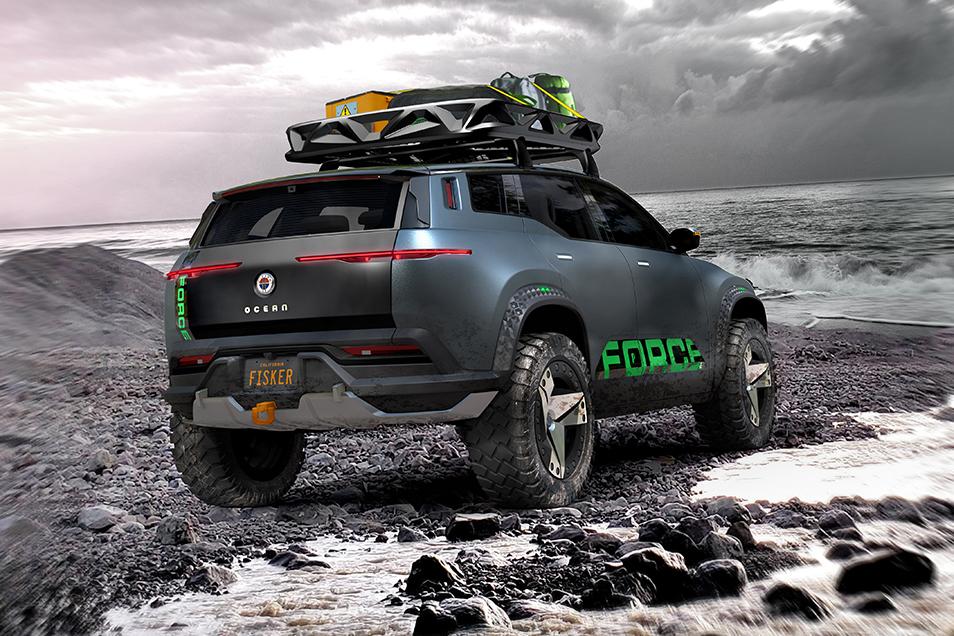

Max Davies
How Audi, BMW, Honda, Mercedes-Benz, and Suzuki started out in Australia, and where they are now
5 Hours Ago
Fisker has revealed renders of the rugged Ocean Force E, reduced its production target for this year, and delayed production of the Pear.

Contributor


Contributor
Electric vehicle (EV) startup Fisker has revealed a rugged off-road version of its Ocean SUV, as it delays the launch of its next model and reduces its production targets.
This latest news comes as the company delivers its first Ocean One launch edition model at the Fisker Centre+ facility in Copenhagen, Denmark. It has now also opened other facilities in Munich, Germany.
Deliveries of the rugged Fisker Ocean Force E are expected to commence in the fourth quarter of this year.
It comes with “substantial” ground clearance and ramp angles, 20-inch reinforced wheels wrapped in 33-inch all-terrain tyres, “specialised” dampers, as well as an estimated 405kW of power.

Fisker notes all dual-motor all-wheel drive Ocean models will be able to be retrofitted with this off-road package.
According to the company’s latest financial results, contract manufacturer Magna Steyr has manufactured 55 engineering, marketing, and customer-bound Ocean models so far this year at its plant in Graz, Austria.
This is one fewer than it produced in the fourth quarter of 2022, and is also short of the previous target of 300 vehicles it aimed to produce in the first quarter of this year.
Fisker is still expecting for production to ramp up and currently aims to produce between 1400 and 1700 Oceans in the second quarter of 2023. By the end of the third quarter of this year the company aims to have a monthly run rate of 6000.

Due in part to the lower manufacturing number in the first quarter, Fisker has scaled back its forecasted production target for 2023 from 42,400 units to between 32,000 and 36,000. This all depends if “all partners deliver”.
It’s worth noting Fisker still says it has 65,000 reservations for the Ocean. It also claims to have more than 8000 reservations for the upcoming Pear.
Speaking of the Pear, Fisker has delayed the start of production until 2025 as it finalises its battery partners. It was previously slated to go into production in 2024 at Foxconn’s newly acquired plant in Ohio.

Although the EV startup didn’t mention anything about the Project Ronin in its latest financial results, it says it will showcase “several new models” at at Investor Product Day later this year.
On the financial front, Fisker posted cash and equivalents of US$652.5 million (~A$963 million) which excludes US$22 million (~A$32 million) value-added tax (VAT) as of March 31, 2023. This is around US$80 million (~A$118 million) less than it had at the end of last year.
Loss from operations totalled US$121.6 million (~A$180 million) which is due in part to higher research and development costs in the first of quarter of this year. There was also a total net loss of $120.6 million (~A$178 million).
Jack Quick is an automotive journalist based in Melbourne. Jack studied journalism and photography at Deakin University in Burwood, and previously represented the university in dance nationally. In his spare time, he loves to pump Charli XCX and play a bit of Grand Theft Auto. He’s also the proud owner of a blue, manual 2020 Suzuki Jimny.


Max Davies
5 Hours Ago


William Stopford
5 Hours Ago


Derek Fung
5 Hours Ago


Max Davies
13 Hours Ago


William Stopford
1 Day Ago


Ben Zachariah
1 Day Ago